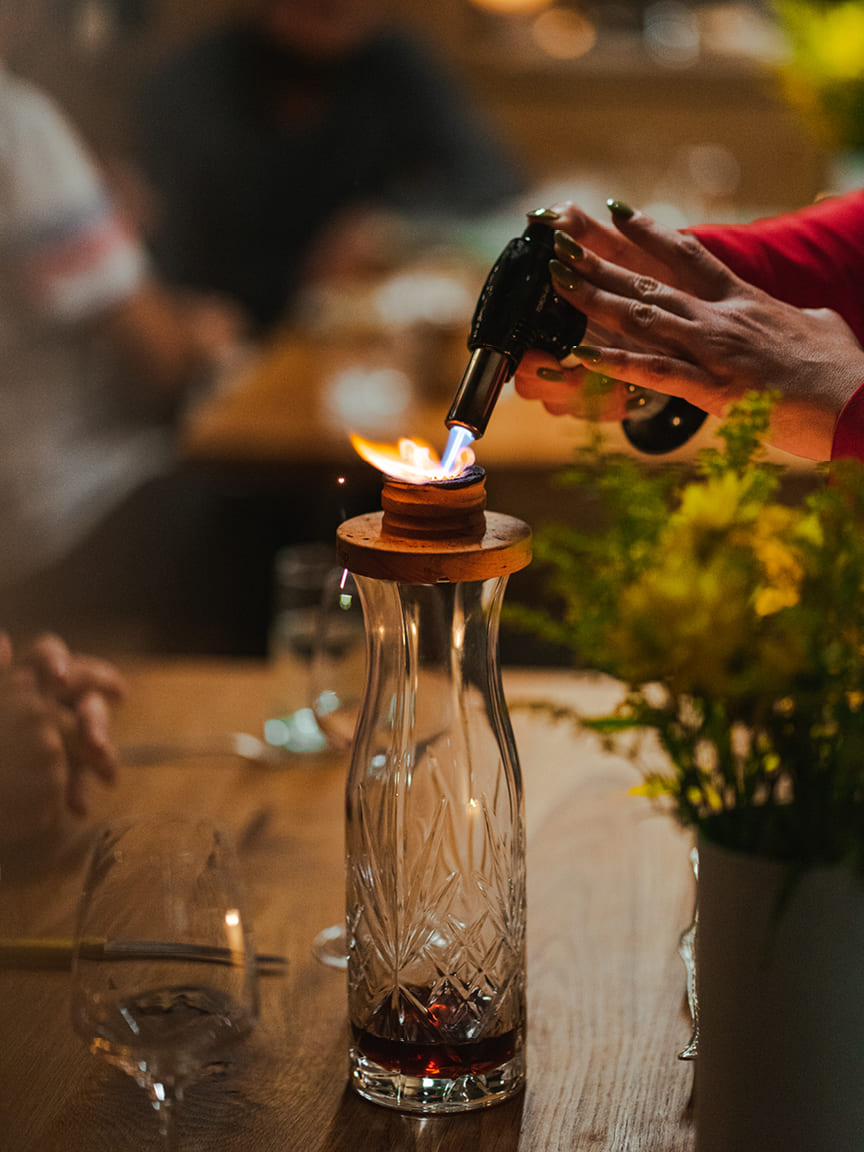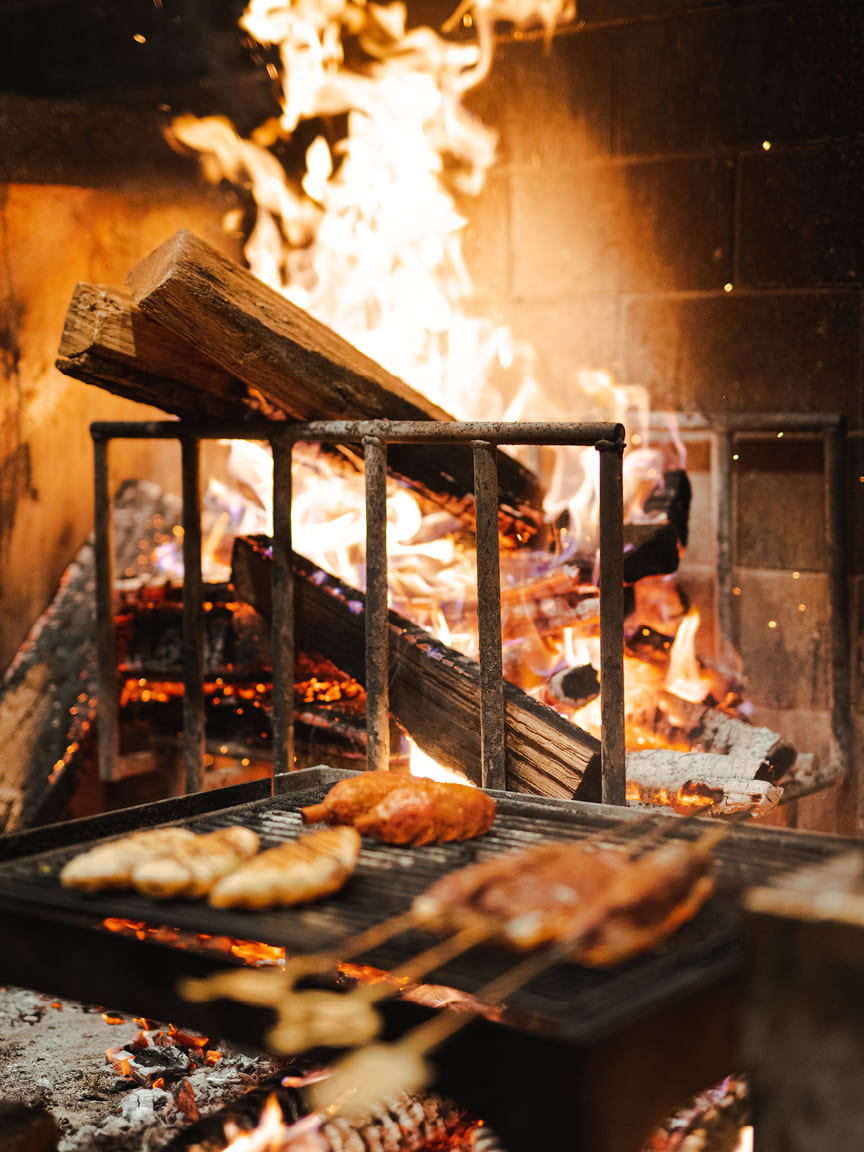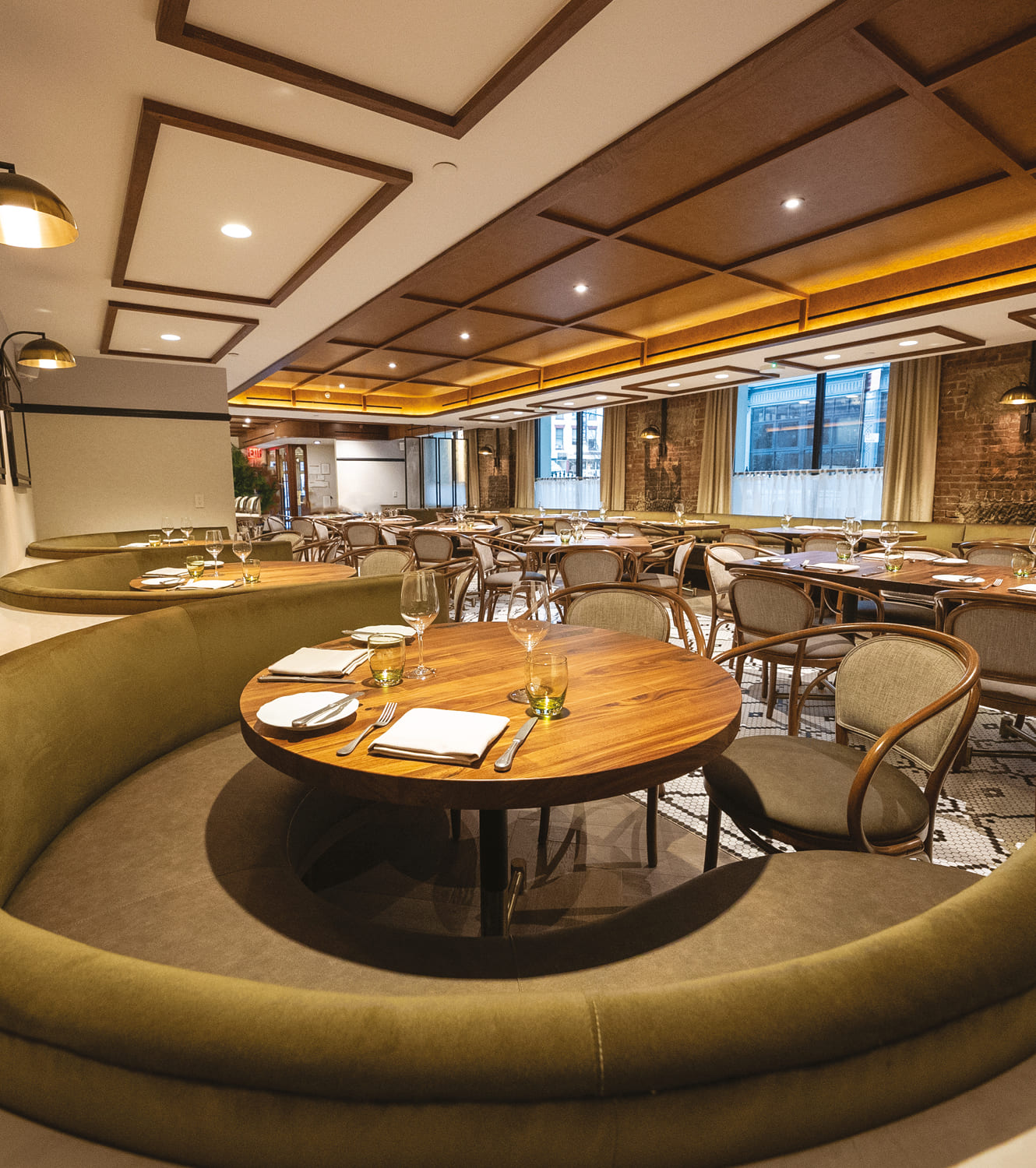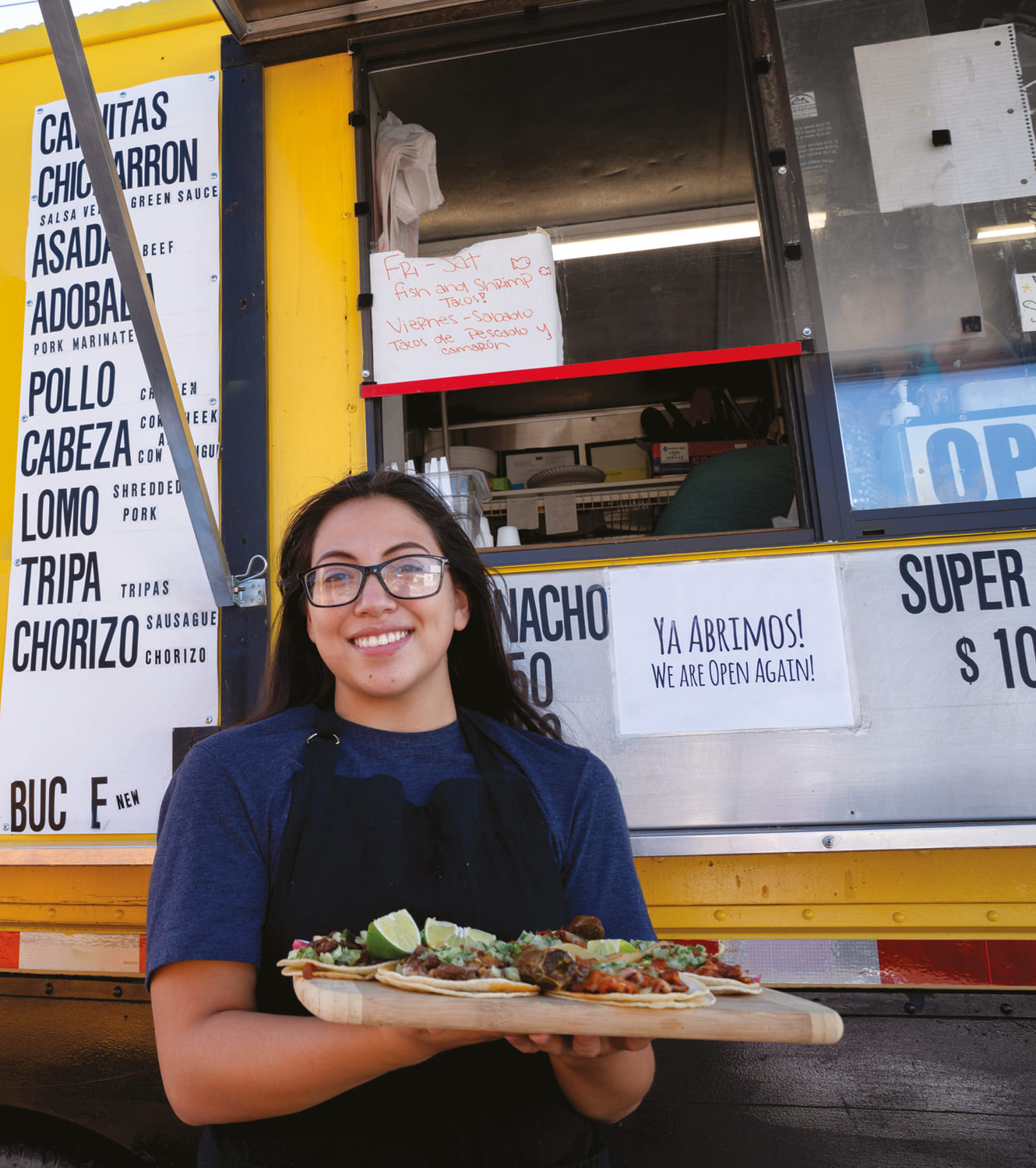
The spirited list
At Albi, the heady atmosphere and complex Levantine dishes are matched by a cheeky wine program laced with obscure references to songs, books and films as David White discovers
Everything here is based on sharing and it can get boisterous,” explains William Simons, the general manager and wine director of Albi, one of Washington, DC’s hottest restaurants. “There’s a lot of bold color. There are various textures. There’s an intensity of flavors. And the music is relatively loud; we’re playing everything from Le Tigre and Jay-Z to Thievery Corporation and Arabic hip hop.”
Simons is describing the food and intoxicating atmosphere at the Levantine restaurant that was praised as one of America’s best new restaurants by Esquire and the Robb Report in 2020. But he might as well have been talking about the restaurant’s wine program.
While the bottles Simons offers are serious, his list is irreverent, packed with quips, bad puns, and obscure references to songs, books, and films. The “Smoky Reds” section — filled mostly with low-octane Syrah — includes a picture of Smokey Bear. The section that’s dedicated to classic reds — think lushly textured, single-vineyard Pinot Noir from Littorai and Jean-Marc & Hugues Pavelot — pays homage to “The Godfather,” because, well, it’s also a classic.
The list also reveals his obsession with wine history.
As one example, the Beaujolais selection educates diners about Philip the Bold, the 14th century Duke who banned Gamay from its birthplace of Burgundy in an edict that criticized the grape as “a very bad and disloyal variety.” As another, his Châteauneuf-du-Pape selection is printed alongside a brief lesson on the Western Schism.
“Sure, maybe only one out of every 50 people who opens the wine list actually reads it,” Simons acknowledges, “but they might get a kick out of it.”
The presence of so much Beaujolais and Châteauneuf-du-Pape makes sense. While the wines are dramatically different — translucent and easygoing versus inky black and brooding — the ideal expressions of both are rustic and mineral-driven, packed with concentrated, sappy fruit. They thus pair well with the diverse palette of Albi’s flavors.
The chef, Michael Rafidi, opened Albi (“my heart”) to showcase and share the food he grew up eating with his Palestinian grandfather and Jordanian grandmother. Many dishes are cooked over a wood-fired grill; it’s hard to imagine the embered mushroom hummus or the barbecued, cinnamon-and-honey-touched lamb kebobs without it.
A successful wine program satisfies virtually every customer but also acknowledges the importance — if not supremacy — of the food. Simons’ selections, while eclectic, are all chosen to match the cuisine that the chef is preparing.
Take the Savagnin from Yetti & the Kokonut, the South Australian producer that has become a darling among natural wine enthusiasts. Or the Pinot Grigio from Jermann, the Friulian producer that proves, year after year, that the grape is a worthy relative of Pinot Noir.
The common theme among both? Screaming acid that can stand up to virtually every dish.
Or consider the wines from Lopez de Heredia and La Rioja Alta. Traditionally paired with tapas, Rioja is a perfect accompaniment to the sőfra (“feast”) one might sign up for at Albi.
One can’t discuss Albi’s wine program without paying tribute to the wines from Château Musar, the famous Lebanese winery that’s approaching its 100th birthday. Albi carries more than a dozen different bottlings from the iconic producer, ranging from the entry level, current-release white to a red blend of Cabernet Sauvignon, Carignan, and Cinsault from 1974.

William Simons © Scott Suchman
“The last thing I want to do is build a list that is all one thing,” Simons explains, “and with the chef’s style of cooking, there’s no need to. There are so many layers and nuances to each dish — some louder, some quieter — that we can approach each from a hundred different directions.”
Albi’s list offers about 300 bottles, so diners can explore the Levant, roam through the world of natural wine, or go in just about any other direction while there. In talking to Simons, it’s obvious that he loves playing the role of wine evangelist, eager to share his palate, preferences, and discoveries with guests.
“One of the things that’s really liberating about the restaurant,” Simons continues, “is that virtually no one walks in with a preconceived notion of what they should drink with the type of food we serve. This frees us to put together a list based solely on how each wine interacts with the menu.”
Alternative dining options to explore: Zahav and Aziza.

SMOKED MADEIRA and BBQ lamb © HAWKEYE JOHNSON. Chef Rafidi © Rey Lopez


We recommend
LITTLE EUROPE: SEE THE EGALITARIAN WINE LIST AT BROOKLYN BRASSERIE, FRANCIE
With its European flavors and brasserie sensibility, Francie’s curated menu includes uncommon wines from European importers, as service director, Paris Pryor, explains the egalitarian and fun program
CAN SOMMELIERS USE THEIR CRAFT TO OPEN OUR EYES TO WINE?
Sommeliers and wine educators can open our eyes to new ways of experiencing wine through artistically curated programs that tap into the mind and soul. We speak to a diverse group doing just that
Taking the natural course
A former fashion executive, Whitney Pope is now Washington DC-based sommelier and founder of Whit + Wine. Here, she discusses her journey from fashion to fermenting , and why there is a natural space for natural wine
FOOD TRUCKS AND WORLD CUISINE CAN LEAD TO DIVERSE WINE PAIRINGS
From London to Lisbon, New York to LA, food trucks have altered the culinary landscape. Katie Kelly Bell asks sommeliers how best to pair world street food with wine




